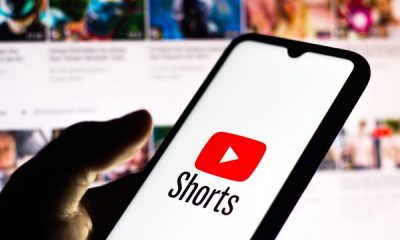INTERNET MARKETING NEWS
What to do if you’re priced out of sports sponsorship – Marketing Week
You know you’ve truly made it in life when your hobbies demand you ignore the fabled ‘three Fs’ rule. For those who are just ostentatiously minted (as opposed to obscenely rich) the adage ‘If it farts, floats or flies, rent – don’t buy’ is likely to be proffered by your chums in the VIP boxes as much as by your wealth management team at Coutts.
Horses, boats and planes are a liability: loss making frivolities that ensure that if you’ve just managed to claw yourself onto the Sunday Times Rich List, then you won’t be staying there for long.
Women’s sport has now reached the sponsorship tipping point
In the later pages of the Rich List, however, where the number of zeroes look like a queue of Minions, the three Fs rule is apparently less of a warning and more of a challenge.
At this rarefied level of the financial stratosphere the population is down to a few hundred Black Amex-wielding souls, but even these captains of capitalism would balk at the costs involved in the apocryphal fourth ‘F’: football.
‘Insane’ costs
Sponsorship costs for top teams are now so gut-knottingly insane they should come with a health warning. The two biggest shirt deals are Chevrolet with Manchester United and Etihad Airways with their derby rivals, Manchester City – coming in at £47m and £45m per annum respectively.
In megayacht terms, you could buy the 74 metre Harrison Eidsgaard-designed ‘Elandess’ and have change left over for a Cessna Citation executive jet – every single year of these seven-year-plus deals.
Getting commercially involved in football should be the king of the F-rules, and it only gets worse if you lose your marbles entirely and buy a team. To paraphrase an old gambling quote: ‘What’s the best way to make a £1m in football? Start with £2m.’
Sponsorship costs for top teams are now so gut-knottingly insane they should come with a health warning.
This is the pinnacle of the sports investment tree, of course, but even as you trickle your way down through the leagues, the numbers involved would still take a significant chunk out of any brand marketing budget.
As with all marketing channels, football sponsorship has moved with the times, albeit at a slower rate than digital and broadcast media. Teams, rights owners and agents are coming up with new and disruptive means by which to sell brand association. One of the most intriguing is the notion of granular sponsorship – short-term deals that slice up the football season into manageable chunks and sell the rights for everything from shirts to match programs in proportional tranches.
A browse around sponsorship platform Connexi unearths some hidden gems that make granular sponsorship a potential reality for businesses who would otherwise assume the football world was beyond their reach. Anyone fancy a Peterborough United match day sponsorship package?
Go even deeper into localised opportunities and you unearth such gems as Sutton Coldfield’s Midland Football League team, Paget Rangers, whose sponsorship proposal page is a work of exceptional genius and honestly puts most Premier League clubs to shame.
Alternative options
Sport sponsorship has progressed significantly since the days of ‘The CEO’s a rugby fan’. Whilst the barriers to entry in the posh seats remain significant, there are numerous opportunities for brands to buy into sport at lower price points and to better exploit their brand and customer acquisition capabilities.
According to a 2019 IPSO study, sports sponsorship trends point towards storytelling, customer targeting and the rise of the influencer as key opportunities that a good partner relationship can generate beyond two dimensional brand awareness. Then of course, there’s the sleeping giant – sponsorship of women’s sport.
Inside Paddy Power’s campaign to ‘call bullsh*t’ on football shirt sponsorship
The rapid (belated) growth in women’s sport has opened up a new, better-value and highly targeted proposition to brands priced out of the male sports market. The fallacy that only women are interested in women’s sport has, according to Nielsen’s 2018 Women’s Sports research, been firmly debunked: 84% of sports fans are interested in women’s sports, with 66% of the US, UK, French, Italian, German, Spanish, Australian and New Zealand populations interested in at least one women’s sport.
The slowness of media organisations and brands to pick up on the zeitgeist means that significant value remains in an environment rich in passionate fans but woefully poor in media coverage. Nielsen’s research states that only 3% of print and 4% of online coverage goes to women-only sport and under 20% of all televised sport covers women-only or mixed sport.
This frankly embarrassing trend mimics the pay packets of the global sporting superstars, with top female athlete Serena Williams placing a paltry 63rd in the Forbes 2018-19 list of highest earners. She’s behind Mesut Ozil, FFS.
For now, the disparity in earnings and media coverage look disproportionately unfair. But for those businesses without media myopia looking to build brand awareness, identity and advocacy whilst telling a compelling and original brand story, women’s sport sponsorship is the low-hanging fruit that looks likely to bloom into significantly greater ROI than its male counterpart over the coming decade.
Harry Lang is a strategic brand and marketing consultant and founder of Brand Architects. You can get in touch with him at Harry@BrandArchitects.co.uk or via LinkedIn.













